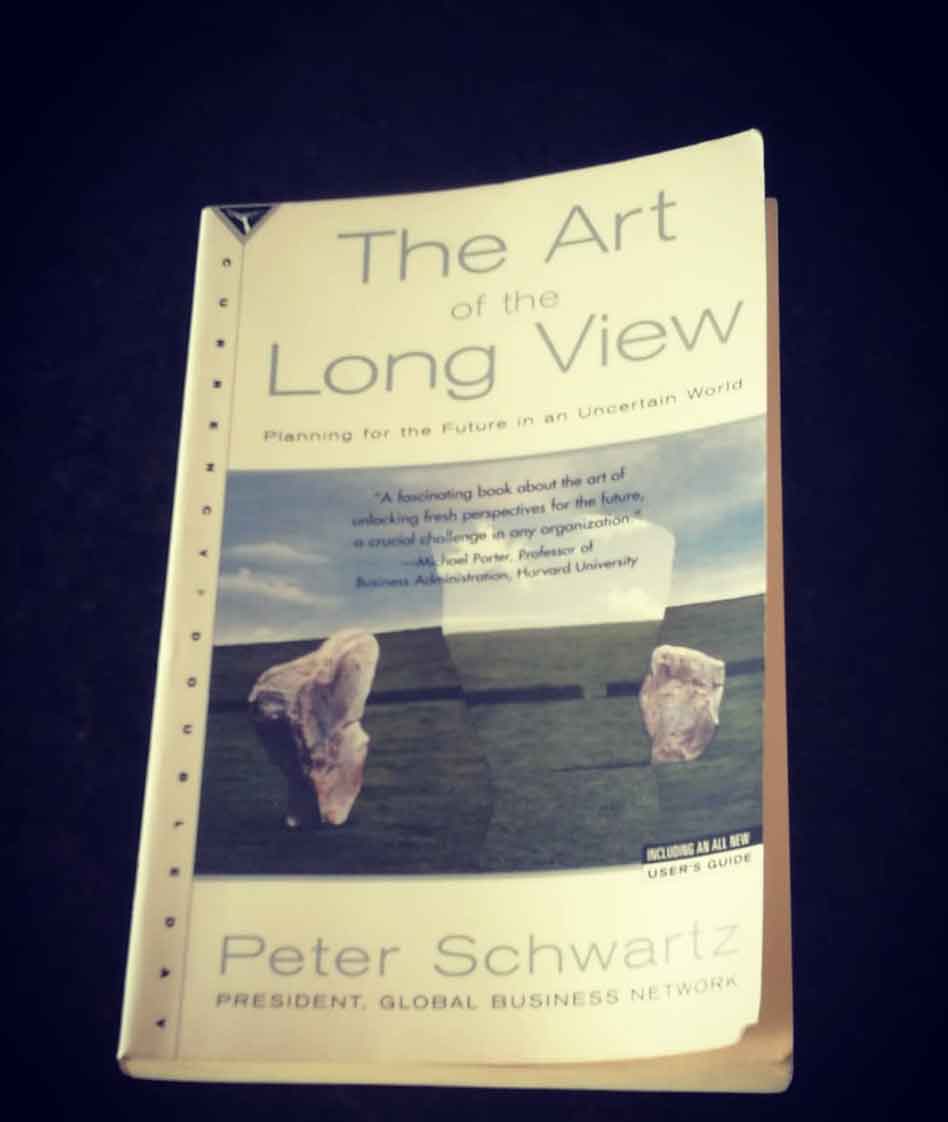
A great practitioner’s manual to foresight through scenarios.
Scenarios are stories that foresight practitioners construct to provide a context for decisions in the future. These are not mere extrapolations, but serve also as a vision around which stakeholders can coalesce. This is a very practical book with good advice. Schwartz does not aim for theoretical and methodological rigour, this is a how-to manual with clear step-by-step instructions coming from his years of experience in the field. For example, in his section on information gathering and hunting (futurists need always to be consuming information from heterogeneous sources) he presents a long list of the magazines that he has personally consulted over the years for new information.
The most theoretical (but still very practical) section is the “Creating Scenario Building Blocks” chapter, where he presents the categories he uses for constructing scenarios. Of these there are three.
Driving forces are fundamental forces that affect the outcome of the scenario; because there are so many of these, salient driving forces should center around the decision being made. Schwartz categorizes driving forces into five categories, these are: society, technology, economics, politics, and environment. Predetermined elements are certain to happen, an example can be slow-changing phenomena like demographic information: a certain number of people are sure to turn a certain age by a certain date.
Finally, there are the critical uncertainties. These can be found by examining predetermined elements: one might know demographic information in the future, but it is uncertain what kind of habits this generation will have.
After determining salient information in these three categories–most effectively in a team to cover each other’s weaknesses, biases, and to broaden the topic from different perspectives–it is time to compose the scenarios. Schwartz recommends two or three different plots, more would be too difficult to process at once. Schwartz gives some of the plots he utilizes the most. An example is the “Winners and Losers” plot, where resources are limited and ever
As a very practical man, Schwartz recognizes the fact that decisions are made by people, and encourages future foresight practitioners to involve decision-making managers into the scenario building process, so that they are emotionally invested. He also acknowledges the power of stories to temporarily suspend disbelief; in the subjunctive “as if” (as opposed to the imperative mood) world of the scenario, decision makers are more willing to engage with new perspectives. A nice and practical, step-by-step user guide at the end completes the book.








































